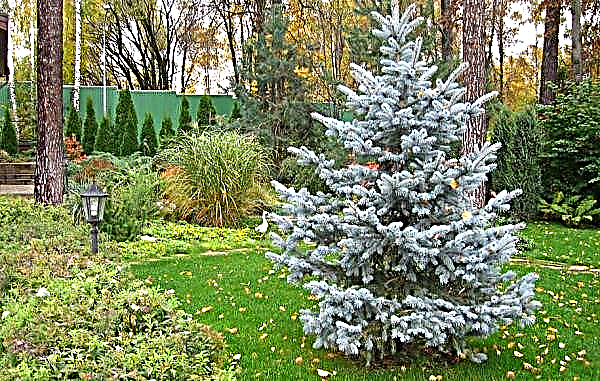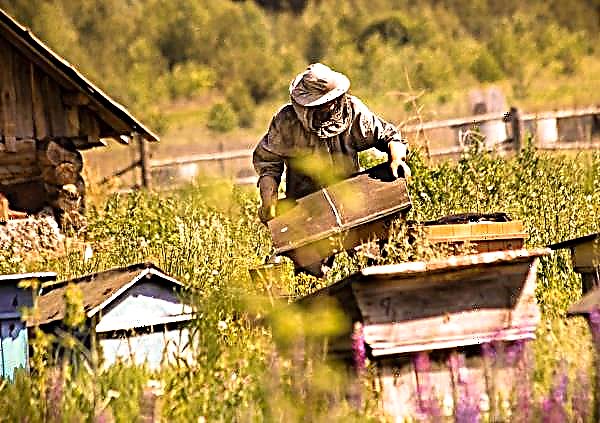Unlike other indoor flowers, tropical orchids do not grow in the ground. They are epiphytes. These are plants that use trees or rocks as a support, and nutrients are obtained from the air. Therefore, it is important for a beginner grower to know how to plant this wonderful flower and how to properly care for it at home. Learn more about planting orchids in this article.
Landing time
Given the wide variety of orchids, it can be argued that the timing of their planting is very diverse. Most often, Phalaenopsis orchid is found on our windowsills - this is a plant with one long peduncle, on which there are several flowers. The optimum landing time for it is in the spring in March-April.
Also note that planting depends on the type of planting material. Varieties that are propagated by bulbs are ordered in nurseries. And you need to plant the bulb as soon as you receive it. Otherwise, it may dry out.
If the orchid is propagated by children who grew up on the mother plant, then they are planted when the roots appear in the children. In this way, Phalaenopsis and Dendrobium multiply. Remember that babies can grow on their mother plant for as long as 6 months.
Did you know? Orchid belongs to the largest family of flowering plants. It includes about 750 genera and more than 20,000 species.
Orchids with pseudobulbs are propagated by cuttings. You can get them when the flowering is over and planted in the ground to grow roots.
But the transplantation of an adult plant is carried out after flowering. And spend it every few years and only when the roots already outgrow the pot.
Preparatory work
Preparation for planting consists of the preparation of planting materials: pot, supports, mixtures. Analyze the conditions under which the orchid should grow and note that not all of them grow in a pot.
Some orchids grow on a support made from a piece of bark and moss. A plant is planted on moistened moss, then its roots are covered with a second layer of moss, it is fixed and the plant is suspended in the air - in a basket or on a wall.
Varieties growing in a pot - Phalaenopsis, Molina, Wanda. Their roots are involved in photosynthesis, so they need a transparent pot. It can be glass or plastic. The substrate will be placed in the pot. These are peat, bark and other materials that serve as a support for the root system, easily pass air and do not retain moisture.
Did you know? Vanilla orchid — this is the only type of orchid that is grown commercially. Its fruits are used in cooking.
Capacity preparation
Buying a pot, you will surely come across many options: glass, plastic and ceramic. Some of them are more decorative. But they have functional differences. Each material also has its own advantages, and the choice of one of them may depend on which orchid you are planting.
The most common plastic transparent pot. Designed for sympodial orchids, the roots of which are involved in the process of photosynthesis along with the entire plant. Tall and narrow pots are suitable for plants with extra-long roots, such as Asian cymbidiums.
The size and number of drainage holes matters. The best drainage is provided by pots, which have openings not only in the lower part of the pot, but also on the sides.
The main types of pots:
- mesh basket for plantsto be seated on a support; the same type of wooden baskets made of teak or other wood; in one such pot you can plant several orchids;
- clear plastic for those whose roots need sunlight;
- tanks with mesh insert to enhance drainage and air circulation;
- pots with two-level drainage, domed bottom, with a large number of drainage holes.
Important! Proportional Root Pot System — this is not a whim, but a care for flowering. Once in a large pot, the orchid will begin to fill it with roots and will not bloom until it finishes with this task.
But most importantly - the pot should be only 2-3 cm larger than the root lump of the orchid. Any of the pots must have a good drainage system.
Video: Choosing an Orchid Pot
Selection and tillage
The main thing you need to know about the soil is that it is the material on which the orchid relies. It can consist of sphagnum moss, spruce bark, coconut husk, charcoal, sawdust and any other porous material, even pieces of foam.
The most common mixture:
- bark or coconut husks, sawdust;
- fine wood charcoal;
- perlite.

Plants that grow in temperate climates need soil that can retain water well, but be well drained. These are mainly cymbidiums. They grow both in soil and in trees. These flowers are distinguished by long narrow leaves and several flowering branches.
To prepare the substrate for planting, you must:
- Mix all components in a large container.
- Pour the mixture with hot water (+ 75 ° C), completely covering the mix with water.
- Let it brew for a day.
- Drain the water. Together with it, foreign impurities will be drained.
Hot water filling is needed to destroy spores of fungi and other pathogenic microorganisms. Now the mixture dries and you can plant.
Did you know? In one seed pod of an orchid there can be up to 3 million seeds. But you will not see them. They are so small that they can only be examined under a microscope.
How to plant an orchid in a pot at home: the main ways
When planting an orchid from a bulb, you will need:
- Prepare the substrate in which it will grow.
- Wash the new pot with soap and water.
- Pour the substrate into the pot halfway.
- Dig a hole with a small spatula. The hole should be the size of your bulb.
- Place the onion in the hole.
- Seal the soil around it.
- Gently tap the ground so that there are no air pockets around the bulb.
- To water.
- Then water whenever the soil dries.
- When the bulb sprouts, it is moistened by spraying water around it from the spray bottle daily.
- Use a small plastic garden stake and twine to fix the plant when it grows large enough.

Water-loving orchids
If you have come across the term “moisture-loving orchid”, then you should know that the term is not scientific. Any orchid in the first place is an epiphyte, i.e. a plant whose roots receive moisture and nutrients from the air and need air. Ideal daily humidity ranges from 50 to 70%.
The standard humidity in the room is 60%. A regular moistening from a spray bottle and periodic watering is enough for a flower. If you need to increase humidity, then it is installed in a tray with wet pebbles. Evaporating in the sun, water will humidify the air around the flower.
Important! Water from the water supply almost always contains chlorine. It oxidizes the soil, which is harmful to orchids. Therefore, if you do not have a water filter installed, leave water to stand for 24 hours before watering.
Sympodial Orchids
Sympodial orchids are many shoots that grow from several points of growth. We can say that they branch. The horizontal parts of this plant form the rhizome, and the vertical parts form several stems. Such an orchid can propagate by cuttings. Dendrobium belongs to this group. After the orchid fades, it can be propagated.
To do this, you need:
- Choose one or more stems up to 30 cm long.
- Cut them from the parent plant.
- Cut into several sections of 3-4 nodes.
- Prepare a container for rooting.
- Prepare a mixture of bark and sphagnum moss.
- Lay pebbles on the bottom of the container and cover it with a mixture of bark and moss.
- Moisturize liberally and drain excess water into the drip tray.
- Place the prepared cuttings in the soil mixture.
- Spray everything with water from the spray gun and cover the container with plastic wrap.
- Put the container in a warm, dark place.
- Maintain in it a temperature of + 25 ° C to + 29 ° C. She must be constant.
- Spray moisture regularly from a spray bottle to maintain humidity.
- Remove those cuttings that begin to rot.
- Spray the plants with nitrogen fertilizer every 2 weeks.
- Continue until leaves and roots appear on the cuttings.
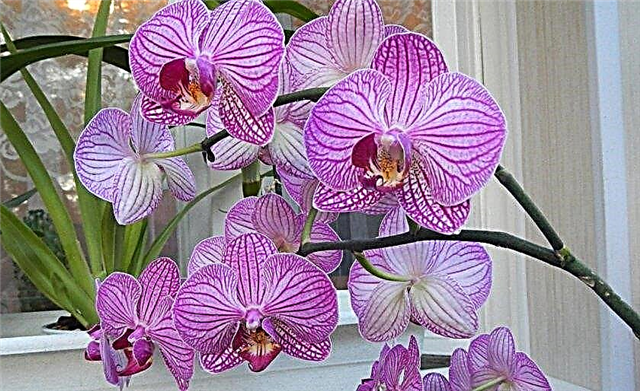
Dendrobiums prefer small flowerpots. Plant them in small pots with a diameter of 5 cm. The soil for planting is sphagnum moss, perlite, tree bark. Moisten the soil before planting.
Care for indoor plants after planting
Proper care will consist of ensuring that the plant:
- optimal microclimate: humidity and temperature;
- conditions for growth: light and shadow;
- watering;
- periodic top dressing with fertilizers.
Did you know? The origin of the orchid is very easy to guess from the leaves. Those that grow in humid climates have thicker leaves. They are covered with a small waxy coating, which protects the plant in the heat from evaporation of moisture.
Plant fixing
Plant fixing is the process of its adaptation to the soil and growth conditions after planting. The fixing time depends on the variety of the flower and its life cycle. The process can take from several weeks to a year, as in the Cattleya species. You can find out exactly how much time your orchid needs from specialized literature.
Location and optimal conditions
Place the pot near the window. It should be south or east. Here the lighting will be quite bright. But the light should not be direct, so do not place the pot in direct sunlight. This will prevent sunburn on leaves and flowers. The north window will not be a good option, since there is enough light on it to turn green and grow, but not bloom.
Also remember that natural light depends on the weather, season, time of day, and changes all the time. Therefore, the phrase "proper lighting" means that the orchid needs the maximum possible amount of light in late autumn and winter on the sunniest window and reducing this light in the fall. If you live in the south, then do not use the south window, as there will be too much light for the flower.
The air temperature should be +16 ... + 24 ° C. At lower temperatures, the plant grows, but does not bloom. Night temperature should not fall below + 16 ° С.
The room should have enough air - the orchid is air-loving. If the street is more than + 18 ° C, open the windows to provide a gentle breeze. Or use a fan to simulate it. Humidity should remain at a level of 50–70% all the time. This is enough to make your flowers feel great.Did you know? Orchids grow on all continents except Antarctica. This gives scientists the opportunity to assume that they existed on Earth even before the division of the continents.
Fertilizer and watering
Once the soil is dry enough, water the flower. The frequency of watering depends on the moisture content of the soil, and not on a certain number of days between watering. If you do not feel moisture with your fingers, then it is time to water the plant.
Depending on the season and humidity, between days of irrigation can take from several days to several weeks. At humidity below 40%, the plants are not watered, but sprayed from the spray gun with misty drizzle.
Any fertilizer used must contain nitrogen, phosphorus and potassium. For orchids, a balanced fertilizer is suitable. It is introduced once a month during the period of active growth and flowering. For several days after applying the fertilizer, the flowers are not watered to allow the roots to fully absorb the nutrients and not wash them off with watering.
Did you know? Orchids are found even in temperate climates. True, this climatic zone accounts for only 10% of the total number of species.
Pruning and transplanting
Pruning is the removal of the stem after flowering. This is necessary, since the orchid does not bloom on the same stem. The exception is Phalaenopsis and Moths. For them, pruning is carried out at a height of 2 lower nodes. For those who have pseudobulbs, a slice is performed on a pseudobulb. Sterile scissors are used for pruning to prevent infection of the plant through the cut.
A transplant is carried out if the orchid has already outgrown the pot and the roots begin to stick out of it. The procedure is performed after flowering has ended.
Transplant Instructions:
- Carefully remove the flower from the old container. If the roots have grown, separate them from the edge of the pot with a sterile knife.
- Prepare a new pot by washing it with warm water and soap. It should be 5 cm larger in diameter than the previous one.
- Place drainage at the bottom of the pot. Suitable for this: pebbles, pieces of polystyrene foam, ceramics.
- Lay the soil mixture on top.
- Shake off from the plant that part of the old material that hangs on the sides.
- Gently lower the plant into the pot and spread the roots with a wooden stick.
- The main roots should be centered. Position the sides so that they are comfortable to develop.
- Shake the pot several times so that the substrate fits well between the roots.
- Do not bury the roots lower than they were in the old pot.
- Add the substrate to the pot. Press the new material with your fingers.
- Make sure the plant is upright.
Video: How to transplant an orchid
How to care during the flowering period
Flowering is precisely the moment for which orchids are grown. There are not so many basic rules of care during flowering and they are easy to remember.
Rules for caring for a flowering indoor orchid:
- Fertilize at least 1 time per month and no more than 1 time per week. Pay attention to the development of the plant. If you have lush greenery and beautiful flowers on peduncles, it is better not to feed or make half the dose of fertilizer for prevention.
- Moisturize the soil before applying fertilizers, this will help the roots better absorb nutrients.
- After fertilizing do not water a couple of days.
- The flower is not moved.
- Control the correct air temperature. If the orchid is cold, then it will discard the color.
- Water the flower in the morning. Water should be warm.
- Drain excess water from the drip tray. It should not stagnate or touch the roots.
Did you know? An orchid will bloom no earlier than in 2-3 years after the start of growth. Therefore, all the colors that you see in the store — for about 5 years now.
Diseases, pests and methods of dealing with them
Orchid diseases occur when you irrigate incorrectly, over-moistening the orchid, or in a pot with an insufficiently drained mixture in which moisture is retained. Changing the conditions of irrigation can minimize the diseases that may occur. All diseases of orchids, or almost all, are associated with damage to spores of various fungi. They are manifested by spots on the leaves, damage and falling flowers, rotting.
Bacterial rot can ruin your flowers. Most diseases can be prevented or cured, especially at an early stage.It is important to regularly monitor the condition of plants and take action.
The main diseases:
- Black rot - This is a fungal disease that occurs from stagnation of water. It appears dark black spots and quickly spreads throughout the plant. Use a sharp knife to remove affected parts of the plant. Reduce the amount of watering. Check the condition of the soil and root system. Remove the affected roots and replace the soil. The disease is extremely contagious. Use fungicide for root treatment. If enough roots are preserved, the plant can restore its health.
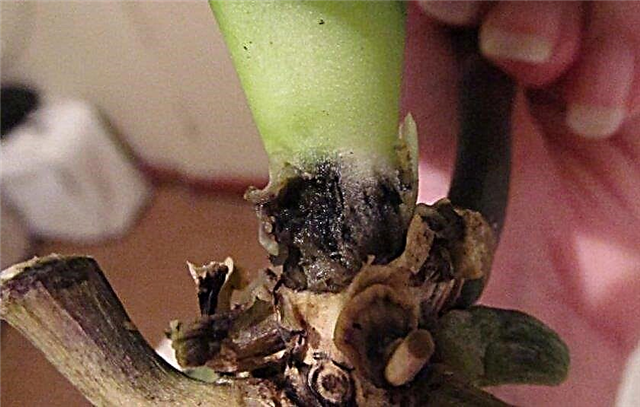
- Neck decay occurs if the environment is warm and humid and the air circulation is poor. When the neck is rotted, the plant dies very quickly. Orchids must also be treated with fungicides.
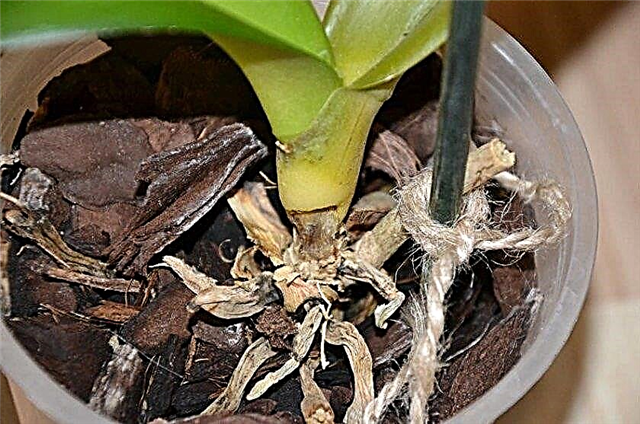
- Bacterial soft and brown rot occurs in hot and dry conditions. It extends to the roots and pseudobulbs. Rotten areas may have an unpleasant smell. Remove contaminated areas and treat with copper-based fungicides.
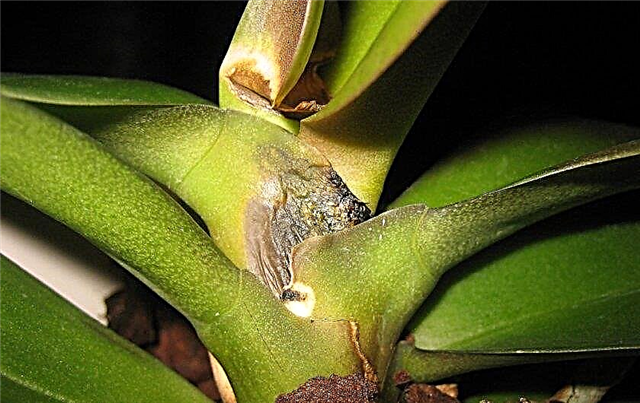
Pests infect orchid leaves and flowers. You can notice them by the deformation of leaves and flowers, moves and holes in the leaves.
The main pests:- Aphids: they come in all colors - including green, red, pink, black and yellow - and are usually found on new succulent growth, including flower buds.
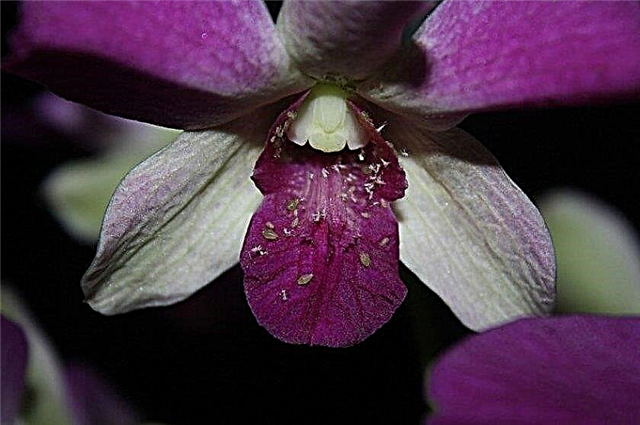
- Melibus (mealybug): the name of this insect largely describes its appearance as a mass of flour. Its habitat and diet are the same as that of aphids. Treatment with insecticides is carried out several times for the reason that the solutions may not affect insect eggs.

- Thrips: small insects that look like long mosquitoes and are very difficult to see. Their tracks are many holes in the leaves.

- Shields: this is another insect that is found in different species, but most have a chitinous cover that protects them like a shell.
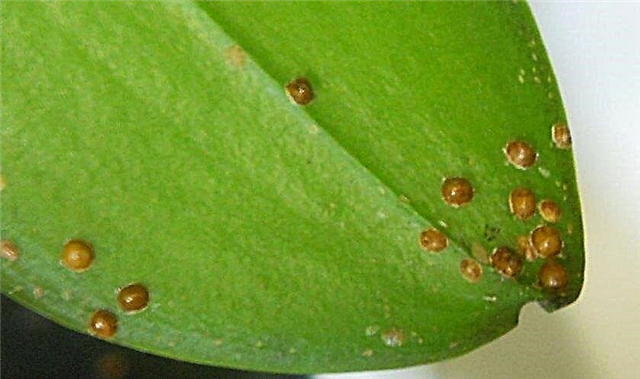
Insecticides are used to treat pests from orchids. But there are also many non-toxic methods of dealing with them. Sucking insects are washed off with a soapy solution. There are no requirements for the amount or composition of soap in the solution, so use the one you use. Increased humidity is detrimental to ticks. Inspect plants daily to see pests in time.
As you can see, caring for an orchid is completely uncomplicated. Even creating the conditions for its growth is also simple. Use your knowledge in practice, and she will certainly please you with beautiful flowering.










